As an Amazon Associate I earn from qualifying purchases.
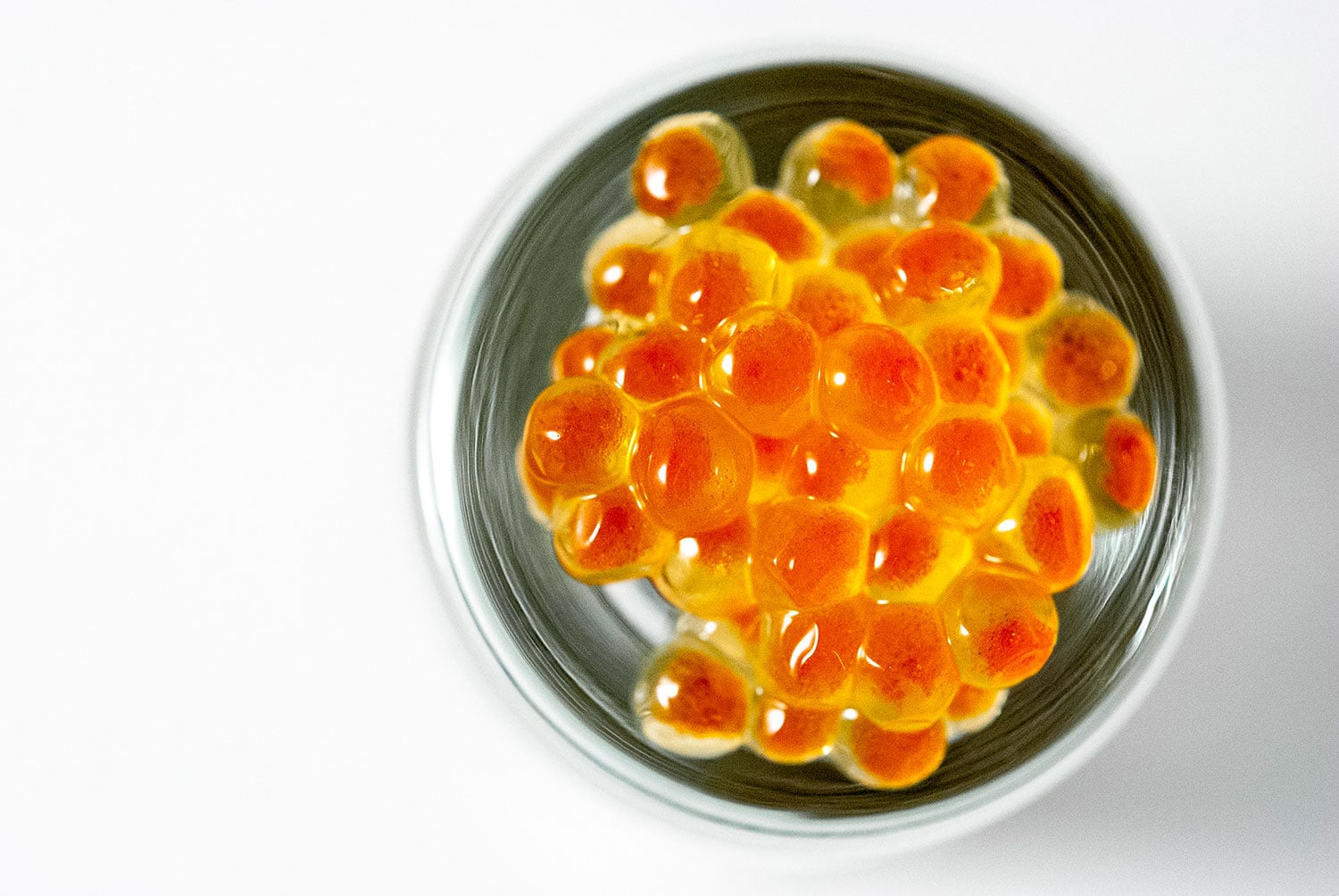
Caviar has always had a hold on me. It is a mysterious ingredient, almost otherworldy; the individual eggs look like jewels from an alien planet. Caviar tastes briny and vaguely floral, and the textural surprise of the pop in your mouth has led more than one writer to liken it to Pop Rocks for adults.
I’ve eaten all sorts of caviar, from spendy Osetra sturgeon caviar to our own California white sturgeon eggs, to Paddlefish roe to salmon roe ikura, to the wonderful little eggs from flying fish (tobiko), capelin and whitefish, which is a golden yellow. I’ve also eaten caviar from trout and char.
Steelhead roe is a particular favorite, as is king salmon roe.
I’d read about a general method of making caviar in a book called The Philosopher Fish, which involves gently removing the eggs from the skein — the membrane holding them together — rinsing them, salting them and drying them. It seemed pretty easy, which alarmed me: How could something so mysterious be so easy to create? It didn’t seem fair.
I delved into some more research, and it is indeed that easy. The art comes in the details: How do you get the eggs out of the skein? How much salt? How long to brine or rub the eggs? What temperature do you store them at?
So I use an amalgam of the methods I’d read about. I brine the salmon roe for a half hour in the fridge. Then I run the skein under hot tap water, which shrinks the membrane and lets the eggs drop into a colander. I then return the eggs to the brine for another 30 minutes. I rinse them off and let them drain in the colander for 15 minutes. Then I package them into a clean glass jar in the fridge. Done!
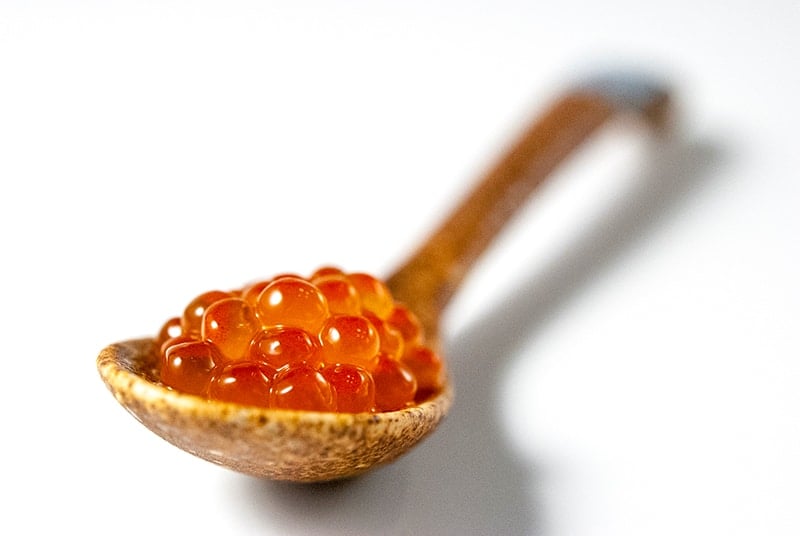
And there is an easier way: Run them over a cooling rack, membrane side up. Either method results in some egg loss, and the hot water trick can sometimes cook the eggs, which is no bueno.
Aren’t they the coolest things ever? I have a hard time not taking them out of the fridge just to look at them. homemade caviar keeps for 2 weeks in the fridge, but I think it gets fishy after about a week.
I prefer my caviar straight, served in a special spoon, so you can linger over the qualities of this caviar versus that one; this is what the Russians do when they serve the three classic sturgeon caviars: Beluga, Sevruga and Osetra. In case anyone cares, I am particularly fond of Osetra, which is pretty close to our caviar made from California white sturgeon.
Remove from your mind the notion that the only good caviar comes from sturgeon.
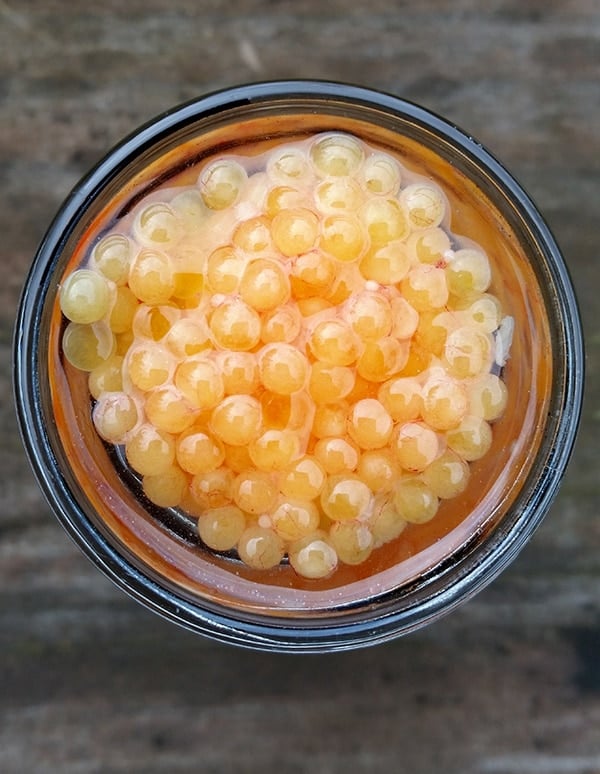
The tobiko and masago you see in sushi restaurants is caviar from the flying fish and the capelin, a kind of herring. It really is like pop rocks. Whitefish caviar is even better, and is a beautiful canary color. Lumpfish is like a larger sturgeon caviar, but trout and salmon caviar is its own thing: large, luxurious, and slightly fatty — I saw thousands of minute fat droplets floating on the top of the brine when I made it.
When combined with a larger dish, caviar can become an accent that makes a good dish great.
I make a pasta dish with flaked salmon, mixed with toasted pine nuts, parsley, shallots, olive oil, Meyer lemon juice — and a spoonful of salmon roe caviar. The color and pop really makes the dish.
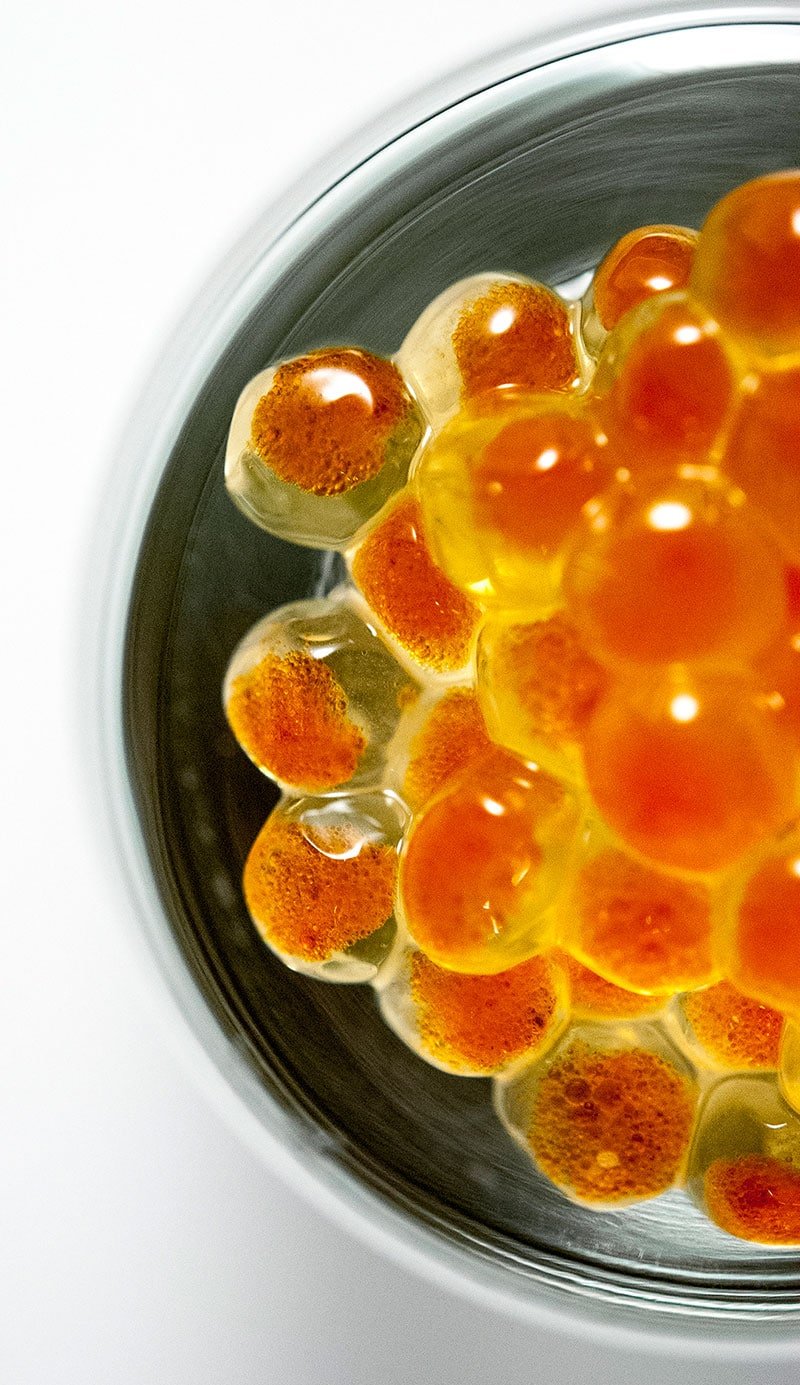
Homemade caviar also works well as a garnish for a simple Japanese dish of salmon or trout wrapped in buttered foil with some matsutake (or other) mushrooms, sake and lemon slices, then baked it for 20 minutes. Damn good.
Will this method work for other fish roes? Yep. I imagine the salting times and care you will need to dislodge the eggs will change, but the basic technique shouldn’t change.
How to Make Caviar
Ingredients
- 1 full skein of steelhead, trout or salmon roe
- 1/2 cup kosher salt
Instructions
- Mix the salt and 1 quart ice-cold water until the salt is all dissolved.
- Make sure the roe skeins are split, so you have an opening that the eggs can come out. Set up a cooling rack or something else with a wide mesh (chicken wire works, too) over a bowl. Take a roe skein and, with the membrane facing up work the eggs out through the rack. Perfectly ripe eggs will come off easily, unripe ones will require some force. Either way, you will pop some eggs in the process.
- ALTERNATE METHOD: Get the faucet running with warm water roughly 105°F to 115°F, or heat cool tap water to this temperature -- some people fear that hot tap water can add harsh minerals to their food. Either way works. Fill a metal or glass bowl with the warm water. Dunk a few skeins of roe at a time in the warm water. Gently massage the eggs out of the skeins with your fingers under the surface of the warm water. They will float away and sink. Discard the skeins.
- Have a fine-meshed sieve ready. Pour the strained eggs into the strainer to rinse them well with cold water. Pick out clumps or stray bits of membrane.
- Dunk the eggs in the brine for 5 minutes. Taste them and if they are salty enough for you, drain them again. You can brine for up to 30 minutes, but they will be very salty. My preferred brine time is 10 minutes. Spoon carefully into a clean glass jar and refrigerate for up to 2 weeks, but try to eat them within a week or they will start to get fishy.
Notes
Nutrition information is automatically calculated, so should only be used as an approximation.

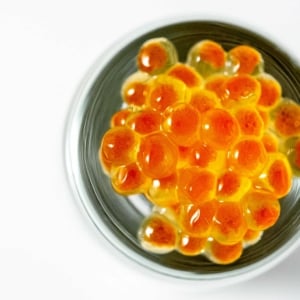

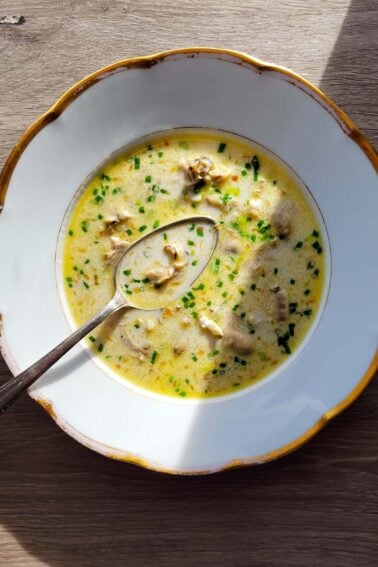

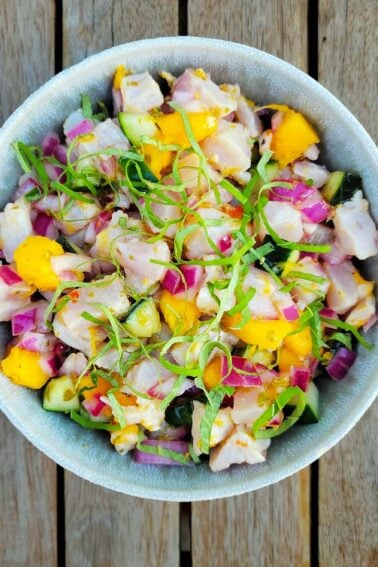
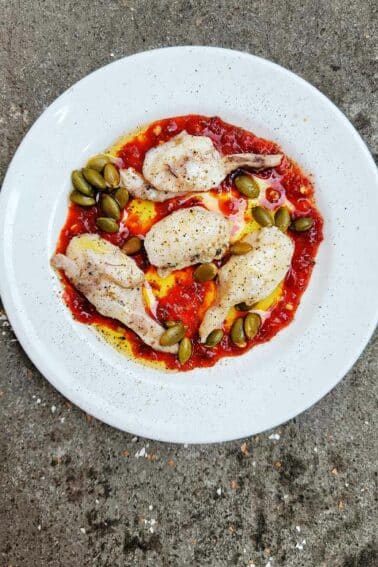
Hi
tell me is there a reason that caviar seems to be made only from freshwater fish?
I wll try it with Snapper and perhaps Kingfish (Yellowtail) and hope that it tastes as good
RR: I swear by the warm water technique — note “warm,” not hot, which would indeed denature the proteins in the eggs. As for bringing time, I am not about to brine for just three minutes, but I could go a little shorter. My issue is I’d rather have these eggs available to me for two-three weeks than to be brighter and fresher — but spoil too quickly. I suppose it’d depend on whether I could serve it all in a short time.
Trout Caviar: Nice name! Warm water is definitely the way to go, IMHO. I will have to check out your site, too. Cheers!
Wonderful post, exquisite photos. After throwing away–for many years, with much regret–the roe of autumn brown and brook trout, I decided a couple of years ago to figure out how to make trout caviar. The results impressed me so much, when I started a blog, that’s what I called it! In the past I’ve painstakingly separated the eggs from the skein with the back of a paring knife, so I’m happy to learn the hot water trick.
As another hunter, angler, gardener, and cook (and forager, and baker) I’m happy to have found your blog, too. I’m going to add it to my links list and look forward to checking in often.
All best~ Brett
Fun article and beautiful photos. I did cringe at the thought of brining the eggs for so long, since steelhead eggs only require three minutes of brining. I also winced at the thought of running the skein under hot water, because that toughens up the membrane and can denature the protiens in the eggs.
Here’s a recipe I was taught in Russia: https://oregonflyfishingblog.com/2009/02/25/winter-steelhead-feast-caviar-and-cutlets/
Stunning! I’m not a huge caviar fan but my husband is. I’d love to surprise him with some homemade caviar.
I’m bookmarking this page!
Josh: I’ve not YET done it with shad, but I am betting that it would come out like tobiko.
Chris: I don’t specifically target femal lobsters, but when I get the coral I add it to sauces, too — and crab coral is vital to make she-crab soup!
Tamar: Yep, they fall right off.
So do the eggs just come off the membrane when you run the roe under hot water? I wish I’d had that tip before I tackled my trout.
I separated the eggs by hand, brined them for 25 minutes, and drained them. Done. I made the simplest possible sauce for smoked trout cakes: Warm a couple tablespoons of roe in a little sour cream. Break a few of the eggs with the back of a spoon (to flavor the sour cream), and leave the rest whole.
Whenever I buy lobsters, I only buy females, so that I can take the roe and add it to whatever sauce I am making to give a real nice depth of lobster flavor. I”m not sure if this counts as making caviar, but it’s putting the lobster eggs to good use!
How about shad? Anybody do this to shad?
Hank – thanks very much for the tips, I’ll be sure to check on that one.
Best is probably chinook, but I like ’em all–even pinks!
David: Thanks for stopping by! What did you do with all that caviar, in Paris, no less?
Dawn: Kids’ food foibles are funny, aren’t they? I would eat scores of raw clams as a boy, but hated olives until I was in college.
Lang: Which salmonid makes the best, in your opinion?
Garrett: Thanks! If you come over this weekend, I can give you some.
Lance: What does the cognac do to the eggs?
Thanks everyone, re the photos! I was captivated by the fatty little yolks in these eggs. Had to get so close I was surprised I didn’t smoosh an egg on my lens…
I can recommend a bit of good cognac in the brine. Maybe blasphemy to some, but still amazing.
I’ve never made caviar…Tho’ I have had it. I love your pics…And it looks delicious : )
Hank, I think this might be one of the coolest things you’ve ever done.
Nice pics. I make caviar from all my salmonids. So easy it almost seems criminal!
I have never made caviar, but now have the inkling to give it a go. And yes, I reckon these might be the coolest thing ever. Love the color, the perfect roundness. They really have that look like they are just ready to burst.
Holly, the caviar photos are just gorgeous. Hank, I’ve never made caviar, but you make it look so easy. I have tried a few different kinds. They are all really different, aren’t they? I always think it’s odd when people tell me, “I don’t like caviar” – and then I find out they have only tried one variety. My 8 year-old son loves the tobiko and masago varieties you get at sushi bars. Funny, kid will eat raw fish eggs, but won’t eat grapes. 🙂
I made this caviar once and it was great & a lot of fun…but it was a lot of caviar! (which, really, wasn’t that much of a problem..)